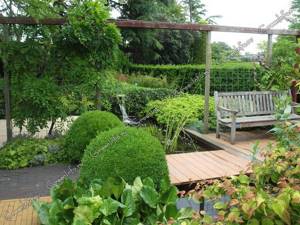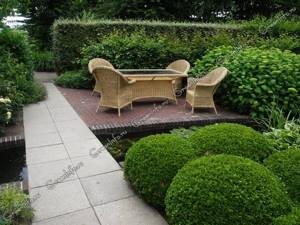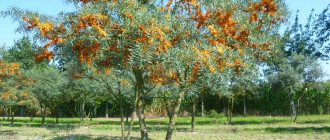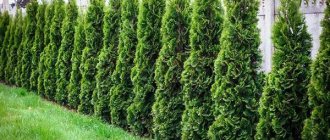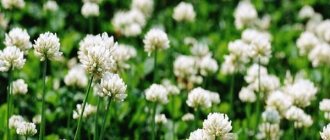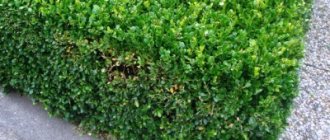A well-kept garden is a source of pride for any owner. To improve the territory of dachas, not only useful fruit and berry bushes are planted, but also decorative options. To make specimens intended for aesthetics even more interesting, topiary trimming of bushes will help.
The design option is experiencing a new round of popularity. The decoration method requires the right approach, which is based on compliance with a number of requirements.

Brief overview of the article
The essence, origin of the design method
The interesting formation of the crowns of bushes and trees has been known for a long time. Regular haircuts for convenience and aesthetics have been performed since ancient times. Sources from ancient Egypt mention the art of such design of green crowns.

A real breakthrough in this matter occurred in France. During the reign of Louis XV, they decided to decorate the gardens of Versailles with the help of topiary. Such a move gave the territory a real zest.
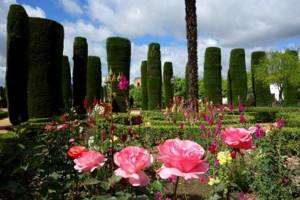
The trend quickly gained popularity. The fashion trend instantly spread throughout Europe. The art was called Topiary.
Selecting plants for curly pruning
Looking at some photos of bush trimming, it seems that it is impossible to get such results. Plants are not just neatly decorated, but turned into real works of art. If bushes with crowns in the shape of a cube, ball or cone evoke approval and affection, then green sculptures delight.
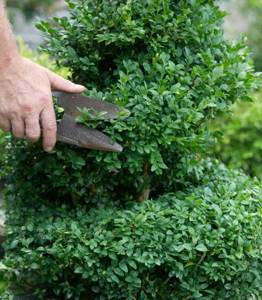
It’s not just the honed skill of using Topiary that helps achieve ideal results. The correct choice of plants for pruning is important. Not every bush is subject to complex processing. Among the number of correct options, evergreen species lead
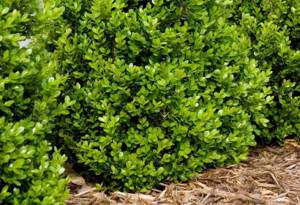
There are erect, densely growing, well-structured specimens. Each type is good for certain types of sculptures and certain conditions.

How to make a hedge trimming template
No matter what kind of plants you use to create a formal garden hedge, trimming it will give it a neat and attractive appearance. An amateur gardener, unlike a professional, cannot correctly form the desired shape of a hedge “by eye.” And professional workers very often use templates. You can easily make such templates yourself.
There are many ways to make a template, it all depends on the shape of the hedge.
If the hedge at the dacha consists of coniferous plants, then basically each plant is cut separately, giving it the shape of a cone. To make a cone-shaped template you will need:
- 4 wooden slats 2 cm wide, 0.5 cm thick and length equal to the height of the plant
- wire with a diameter of 2 mm
- drill
- screwdriver
Before installing slats over the plant, you need to drill holes in them with a diameter of 4-5 mm along the entire length every 10 cm. Then the slats are installed above the plant evenly in a circle and fastened crosswise at the top with self-tapping screws.
Next, a wire is fixed to the top of this structure. The plant is wrapped with it from top to bottom. During this manipulation, the wire is threaded through the holes in the slats. The wire tension should not be strong. Only at the very bottom does it need to be tightened, since there it should tightly tighten the slats.
The plant is ready for cutting! Armed with scissors or a hedge trimmer, let's begin. The tool must work directly over the wire. After cutting, remove the template, unwinding the wire, and transfer it to another plant.
To trim a trapezoid-shaped hedge, you can make a template, or you can simply stretch the wire between the driven stakes. To make a trapezoidal template you will need:
- a sheet of plywood is 10 cm wider and longer than the bush
- jigsaw
In a sheet of plywood you need to cut a trapezoid of the required width and height. The template is placed on the edge of the hedge and moved 3-5 cm to the side, parallel to the imaginary middle line. To get a perfectly even top of the fence relative to the ground, it is very important that the template at the bottom is in contact with the soil. As you move the template, the branches of the fence bend, indicating that they are to be cut. A haircut using this pattern is done only with scissors. In the same way, you can make a template for a semi-oval and rectangular fence.
In order to trim a hedge with a power tool, it is necessary to build so-called “guides”. This method is quite complex to describe, but simple to implement. To make “guides” you will need:
- stakes
- wire with a diameter of 2 mm
Let's say the lower base of the trapezoid is 60 cm, and the upper one is 20 cm. Then at the beginning of the fence we drive a stake exactly in the middle, from it to the right and left we measure out the places for the stakes. First, we drive in stakes at a distance of 10 cm from the middle stake - these are the ends of the upper edge of the trapezoid, then at a distance of 30 cm - these are the ends of the lower edge. The driven stakes must be in the same plane.
Now we do the same thing every 1.5-2 m, but without the middle stake, we drive it in at the beginning of the fence and at the end, and stretch the thread between them. It plays the role of zero - the beginning of the reference point. You need to drive the stakes into the ground no more than 10 cm, otherwise you can damage the root system of the plants.
After the stakes are driven in along the entire length of the fence, we proceed to strengthening the wire. First, we attach the wire to the stakes marking the ends of the upper edge of the trapezoid, choosing the desired height. The wire should run along the fence. Using the same method, we attach the wire to the stakes marking the ends of the lower rib. The result will be a frame for cutting.
If the height of the fence is small, and the gap between the lower wire and the upper one coincides with the ends of the blade of the electric scissors, then the creation of the guides is completed. If the hedge at the dacha is high, then from the upper end of the trapezoid to the lower end we attach slats to stakes and stretch additional wire along them.
In the same way, you can make a frame to give the fence a rectangular shape. Only in this case there is no need to drive in 4 stakes; the wire is attached parallel to the fence, at the top and bottom on two stakes delimiting the edges of the rectangle on the sides.
On the image:
- blue stake - the middle of the fence
- red stakes - ends of the upper base of the trapezoid
- brown stakes - ends of the lower base of the trapezoid
- red and brown mark the wire defining the upper and lower ribs, respectively
The spherical haircut is considered the most difficult both in terms of cutting technique and production. The template for such a haircut must be made exclusively from a building material such as steroform (extruded polystyrene foam). A circle of the size required for cutting is cut out of the steroform sheet. Then, at the very bottom of the circle, an opening is cut for the plant's trunk with a width corresponding to the trunk. The template is placed on the side of the plant, moving towards the middle until the trunk is in the opening made for it.
Now let's start trimming. The branches bent by the template are cut with scissors. By scrolling the template around an imaginary axis passing through the center of the plant, you can easily see the branches to be cut.
Having decided to trim the hedges at your dacha yourself, you need to stock up on considerable patience and perseverance. Both making the template and the cutting process itself is a painstaking job that needs to be done as carefully as possible. But in principle there is nothing to be afraid of. If pruning didn’t work out this year, you can fix it next year. Even a heavily trimmed area will be overgrown with new branches within a year.
As a last resort, you can fix everything this year in two ways: change the shape or change the size. For example, if you were originally planning to trim a rectangular hedge, and something didn’t work out during the process, then you can change the shape to trapezoidal or make the hedge a little smaller.
Read our other articles about hedges: “Hedges for gardens in a regular style: selection of plants”, “Hedges in the country: tools for cutting”, “Cutting a hedge”, “Hedges in the country. Selection of plants”, “Restoration of hedges”.
Noble laurel
The option refers to evergreen plants. The leaves of the specimen are dark green, the crown is coarsely structured. The species has poor frost resistance, which makes it impossible to use the option in the middle zone.
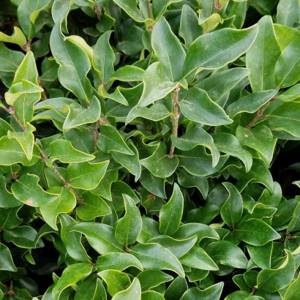
The bush grows slowly, allowing for minimal intervention to maintain the result. Laurel is ideal for spherical sculptures.
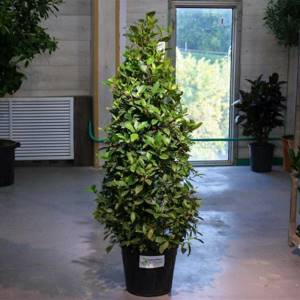
Something for your scissors.
There are dozens of trees and shrubs that tolerate pruning well, even in central Russia. And there are hundreds of them with varieties. If varietal plants are not available to you, you can easily find objects for trimming in the forest. Our common species such as linden, willow, spruce, juniper, elm, and alder are well sheared.
Common privet has all the qualities necessary for a border shrub. It has medium-sized foliage, grows well after being cut, and holds the shape given by the cut for a long time. Its disadvantage is its relatively low winter hardiness. But if you use its decorative form “Atrovirens”, which, by the way, is the most common, and limit the cut “products” to a height of 60-70 cm, then frost damage is practically eliminated.
Privet has a variety called "Aurea" with golden foliage. It is three times lower than the main form, and less durable. But if you use it for squat curbs 15-25 cm high, practically no freezing is observed.
Brittle willow is best known for its popular decorative form “Bullata”, which is also called “self-stringing” due to the density of its contours. It should be said that the wild varieties of this willow are not inferior in attractiveness to the cultivated form, and are also well trimmed. In nature, it is usually a medium-sized tree, 7-8 (up to 15) meters high, with a dense tent-shaped crown, leafy only at the top.
Cotoneaster brilliantis - in terms of its representation in landscaping and park construction, it is the main border shrub for central Russia and the North-West. But in urban plantings it is often unimpressive with its appearance, which discourages gardeners from using this shrub in the garden. It must be said that this is not the fault of the cotoneaster itself.
Usually low borders 60-70 cm high are made from cotoneaster, which can be very decorative if done correctly. Look at what cotoneaster is capable of, from which wide shaped hedges are created through dense multi-row planting. Such hedges are trimmed up to 5-6 times per season. But if impeccability is not your first priority, then three times is enough.
Viburnum foliage - thanks to its pliability in pruning, and especially its two “colored varieties”, this shrub is one of the most useful ornamental deciduous shrubs for yard landscaping and small amateur gardens. It allows for an incredibly diverse range of uses in the garden. Both varieties (purple “Diabolo” and yellow “Aurea”) can be used for trimmed trapezoidal hedges 120-170 cm high.
We suggest you read: How to get rid of aphids in the garden
A hedge, if cut only from the sides, can be semi-free. In both cases, hedges not only do a good job of fencing, but are excellent screens from prying eyes and serve as an excellent background, against which the most ordinary flower arrangements become unusually attractive.
Individual bushes can be formed in the shape of an “inverted drop”. In this way, by the way, you can refine a completely mature bush. Other haircut shapes can be a variety of geometric shapes: balls and hemispheres, cubes, pyramids. Asymmetrical forms of cutting look no less impressive - various pillows, mops, which can be created by cutting a single plant or several densely planted bushes, united by cutting into one whole.
Rhododendron Katevbinsky - colorful flowering is expected from rhododendron, and few people notice how beautiful its shiny leathery leaves are, similar to lingonberry leaves, but 10-15 times larger. This species itself is winter-hardy, but does not bloom every year. The bush is initially quite dense, but with age it can stretch out and thin out.
Japanese spirea “Golden Princess” - Japanese spirea has a lot of varieties that initially have thick and dense crowns. It is not difficult to refine their appearance by transforming them into pillows, balls and hemispheres. This, by the way, does not have any negative consequences for their flowering. As for the Golden Princess variety, it is remarkable for its small leaves, the golden color of which is practically unchanged from spring to autumn.
The varieties “Little Princess”, “Shirobana”, “Gold Mound”, “Gold Flame”, etc. are also suitable for cutting.
Thuja occidentalis - almost all varietal thujas are well trimmed. But when cutting them, it is advisable to adhere to the rule: the silhouette of the haircut should be similar to the natural growth form of the variety. Balls, hemispheres and pillows are formed from spherical varieties; from pyramidal ones - columns, pyramids, cones, etc. Number of haircuts from 3 to 6 per season.
The varieties “Rhine Gold”, “Aurea”, “Smaragd”, “Globoza”, “Golden Tip”, “Kristata”, etc. are good for cutting.
Kuril tea - most varieties of Kuril tea have loose and loose crowns. Giving density and smooth contours unrecognizably changes the appearance of the shrub for the better. Even a non-flowering bush becomes unusually attractive. In addition, cutting does not hinder, but on the contrary, stimulates flowering.
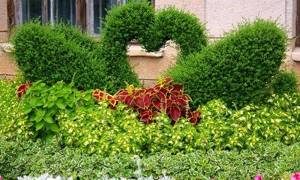
To ensure proper care for shrubs and trees, it is recommended to regularly prune them to form a crown.
Or you can do not the usual pruning of branches and twigs, but arrange a cluster of green figures, shapes and reliefs in the garden. Neatly formed shrubs have a well-groomed, noble appearance.
Using the curly haircut method, you can set a certain style for an area or dilute the existing one.
Common boxwood
The crown of the bush has a fine structure. The foliage is endowed with a noble dark green color. The plant looks respectable, but is poisonous. This option is ideal for creating detailed figures. It is from Boxwood that the best works are obtained, which everyone admires.
Crown molding procedure
Shrubs need to be trimmed to shape the crown at least once a year. The procedure is usually performed in the spring. It is advisable to carry out the intervention before fresh foliage appears.

If the bush blooms beautifully, then the operation is not carried out during the budding period. For pruning, use shears to trim bushes. The shape is set using additional improvised means or special limiters.
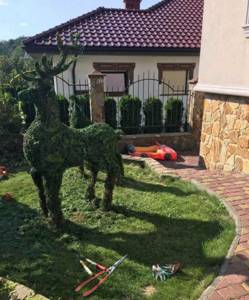
You can use a simple rope or make a wire frame. For complex figures, the basis is established before the results are consolidated. Some parts require framing on a regular basis.
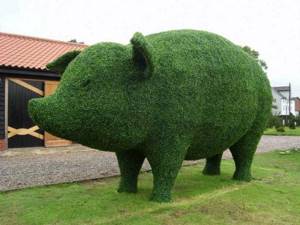
Selecting Tools
Every gardener should have on his property the tools and supplies needed for pruning and healing trees. The tools you need to have are pruning shears, a garden hacksaw, a grafting knife, a lopper and a garden knife.
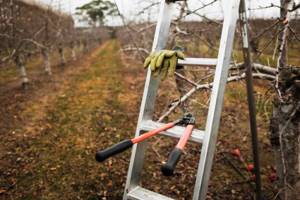
The tool must be chosen from good steel, so do not buy cheap products. The tool should be easy to use. You need to use sharp and clean tools.
Also, to trim trees on the site, you must have a means for processing the cut, for example, a garden varnish.
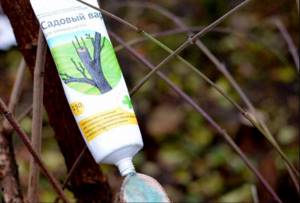
After following all the rules and instructions for pruning trees, rest assured that you have done everything correctly. Next year, even the oldest tree will thank you with a bountiful harvest.

Ball-shaped "cap"
To give the bushes a spherical shape, it is necessary to properly trim the side shoots. When working “by eye” there is a high risk of errors. When forming a hat, it is better to use a wire ball, which is placed over the crown. Trimming is done strictly along the contours. This option is ideal for forming small plants with a well-structured crown.
Universal balls
It is easier to use saxifrage or juveniles as small “bumps”. Large hemispheres are imitated by Kochia scoparia. Kochia is an annual plant; it needs to be grown through seedlings. Plant several specimens together and trim them as you wish. In addition, in the fall it will change color to bright burgundy.
Among the fashionable and favorite conifers there are many varieties with spherical crowns: large and small, with yellow, green and blue needles. For example, black spruce Nana; Norway spruce Little Gem, Wilson; mountain pine Pug, Varella; Thuja occidentalis Globoza, Danica; Canadian spruce Blue Planet, Alberta Globe.
Standard forms of coniferous and deciduous plants are very good. They definitely need to be included in the “spherical” landscape. And if you plant groups of spherical shrubs at regular intervals, you will get an impressive volumetric composition. Don’t forget to plant a few “balls” where the garden path turns or just next to a round platform or podium.
|
Decorative bows “balls to all the balls”! Go to a flower shop in the fall (this is the time when bulbs are planted) and your eyes will widen from the abundance of shapes and colors. The most “prominent” is the aflatun onion (Allium aflatunense). Such large and bright balls are impossible not to notice.
Rejoice, lovers of bright colors - new chrysanthemums from the Multiflora group have appeared, which by themselves, without any pinching, form a perfectly even ball!
Cubic bush
Forming a cube is not difficult at all. It is enough to trim the crown evenly on all sides. The easiest way to do this is to use a thread stretched tightly around the perimeter of the intended cuts.

They work according to a guideline. Using an even cut, remove all the tops from the desired sides. In this way, you can not only design cube-shaped bushes, but also make an ideal hedge cut.
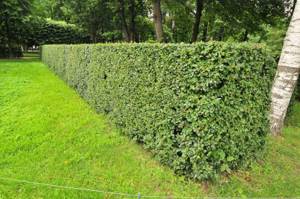
Spiral
Those who have already mastered the topiary technique can proceed to more complex figures. The design in the form of a spiral - one- or two-sided - looks impressive.
A spiral shape is often given to thujas and junipers.
The figure is based on a cone or column. The coils are marked on the plant with bright tape, tape or paint. The number of turns and the pitch of the spiral depend on the height of the bush; most often 3 or 5 turns are used.
Using pruning shears or scissors, cut out shoots along the markings. The depth of the cut also varies depending on the designer's intent:
- deep - shoots are cut from the trunk;
- superficial - the branches are cut off by half or a third, only outlining the contour of the spiral.
Once you master the simple shapes, you will definitely want to create your own unique topiary in the garden. Share your achievements on the website.
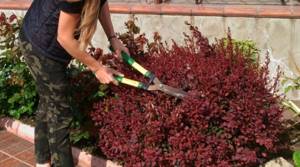
Some amateur gardeners create fences on their garden plots from green spaces. This is very beautiful and worthy. However, such a hobby requires a lot of time. A beautiful hedge can be achieved if it is subjected to constant and careful pruning. Let's take, for example, such a beautiful plant as barberry. The bushy defender of the territory will serve you for a long time and will delight not only you, but also people passing by. Let's look at how to properly prune barberry.

Spiral crown
A young bush is tied to a pole. A rope is attached to the top of the head, which is directed downwards, having previously wrapped the object in a spiral. The grown shoots are cut to the shape specified by the rope.
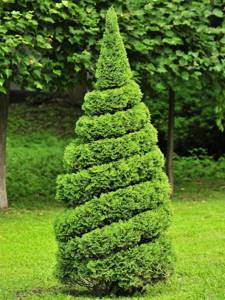
After achieving a visible result, the rope is removed. The object continues to be trimmed using shears for trimming bushes and grass.

Complex curly trimming
To obtain a complex shape you will have to try. Here you cannot do without special frames. All methods are used in the work, focusing on the shape of individual parts of the figure. A living sculpture can be made from 1 or several plants. Forming usually takes more than 1 season until the optimal result is achieved.

Curly garden trimming will help achieve incredible aesthetics of the territory. You will have to constantly deal with the design and maintenance of the results of cutting the crowns. The work will not become difficult or routine if you approach it correctly. Obtaining visible results will undoubtedly add enthusiasm.
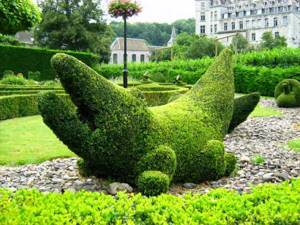
Beaver haircut
Anything can be round: a barbecue area or patio, a swimming pool, a pond, flower beds, even a country house can be designed “in a circle.”
|
|
We usually relax on our favorite bench or in a wicker chair in a quiet corner of the garden. To enhance the effect, you can pave this area so as to leave space for planting shrubs that tolerate pruning well. Here are the charming hemispheres, alive and green. Make them different sizes, the look needs dynamics. This composition is very appropriate in front of windows facing the garden - very laconic, clean and beautiful.
|
